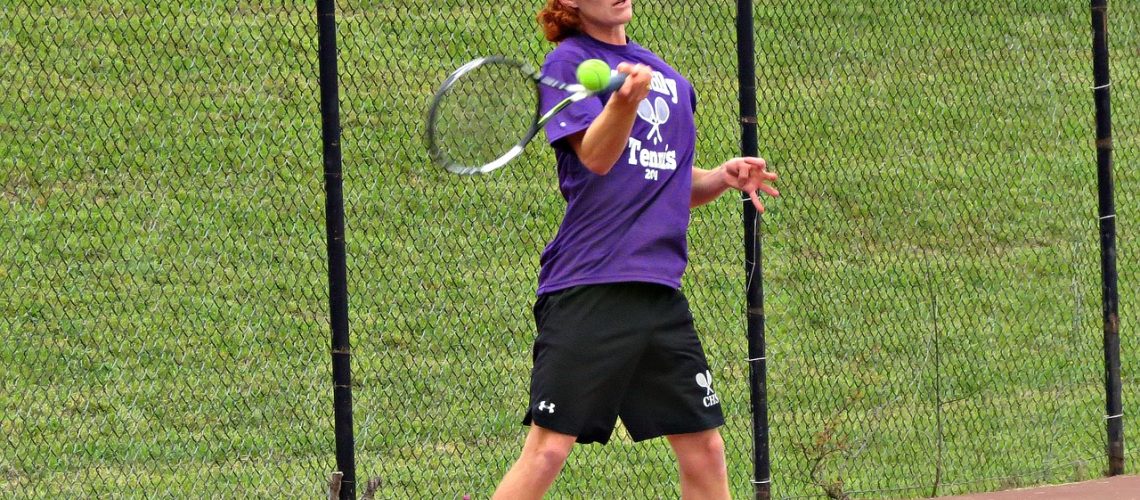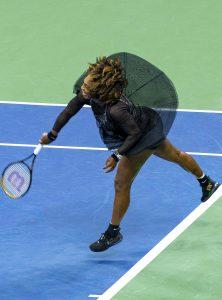We may earn money or products from the companies mentioned in this post.
The Importance of Tennis Strings

When it comes to playing tennis, the importance of tennis strings cannot be overstated These seemingly small and often overlooked components of a tennis racket play a crucial role in the overall performance and feel of the game Tennis strings are responsible for providing power, control, spin, and feel to each shot They act as the intermediary between the player’s swing and the ball, translating the energy generated into a responsive and accurate shot
Factors Affecting the Lifespan of Tennis Strings

The lifespan of tennis strings can vary depending on several factors One such factor is frequency of play If you’re an avid player who hits the court regularly, your strings will naturally wear out faster compared to someone who plays sporadically Another factor is playing style; players who hit with more topspin or aggressive shots may put more strain on their strings, causing them to break or lose tension sooner
Additionally, environmental conditions can impact the longevity of tennis strings Extreme heat or cold can weaken the materials over time, leading to quicker deterioration The type of string used also has an influence on its lifespan Natural gut strings tend to be more fragile but offer excellent playability while polyester strings are more durable but may not provide as much feel
Overview: The Four Sections

This article is divided into four sections that will provide you with all you need to know about tennis strings:
1 Types of Tennis Strings
In this section, we’ll explore the different types of tennis strings available in today’s market From natural gut to synthetic materials like polyester and multifilament options – we’ll discuss their characteristics, benefits, and drawbacks
2 Choosing Tennis Strings
In this section, we’ll delve into the factors you should consider when choosing tennis strings From your playing style and skill level to personal preferences, we’ll guide you through the decision-making process to help you find the perfect strings for your game
3 Maintaining Tennis Strings
In this section, we’ll provide tips and techniques on how to properly maintain and care for your tennis strings We’ll discuss string tension, restringing frequency, and other maintenance practices that can extend the lifespan of your strings
4 Replacing Tennis Strings
In this final section, we’ll explain when and why you should replace your tennis strings We’ll cover signs of wear and tear, loss of tension, and how to know when it’s time for a fresh set of strings Additionally, we’ll offer some insights on how often professional players restring their rackets
When it comes to determining when to change tennis strings, several factors come into play First and foremost is the type of tennis string material used There are various options available, each with its own unique characteristics Natural gut strings are known for their excellent feel and power, while synthetic gut strings offer a good balance between durability and playability Multifilament strings provide a softer feel and greater shock absorption, making them ideal for players seeking comfort On the other hand, polyester (poly-based) strings offer exceptional control and durability, making them popular among advanced players who generate a lot of spin
Another key factor to consider is the player’s skill level and frequency of play Beginner players may not put as much strain on their strings compared to more advanced players Therefore, they may not need to change their strings as frequently However, it’s important to take into account the average playing time per week and any specific string tension requirements that beginners might have
Intermediate players typically have a higher playing frequency than beginners and may require different string tensions based on their skill level and preferences It’s essential for them to evaluate how often they play per week and whether they need adjustments in string tension to optimize their performance
Advanced players, who often spend significant amounts of time on the court honing their skills, tend to hit harder shots with more spin This places greater stress on their tennis strings, causing them to lose tension more quickly Advanced players should pay close attention to both their average playing time per week as well as any specific string tension requirements they might have based on their playing style
Lastly, a player’s playing style and technique also contribute significantly to when they should change tennis strings Players who rely heavily on topspin shots exert more force on the strings during each stroke due to the increased ball rotation generated This can lead to quicker wear and loss of tension in the strings compared to those who hit flatter shots
Additionally, players who frequently engage in volleys and delicate touch shots may prefer strings that offer better feel and control These types of shots require precise timing and accuracy, making it important to have fresh strings that can provide the necessary feedback
In conclusion, determining when to change tennis strings is a multi-faceted decision that depends on factors such as the type of string material, player skill level and frequency of play, as well as playing style and technique By considering these factors carefully, players can ensure optimal performance on the court and maintain a consistent feel with their tennis strings
How to Identify When It’s Time to Restring Your Racket

Is your tennis game not up to par? It might be time to take a closer look at your racket strings Over time, the strings on your racket can wear out and lose their elasticity, leading to a decrease in performance But how do you know when it’s time to restring your racket? Here are some telltale signs:
Signs of Wear on the Tennis String Surface
- Fraying or Splitting in Certain Areas: Take a close look at the strings and check for any fraying or splitting If you notice these signs in specific areas, it’s an indication that the strings are worn out and need replacing
- Visible Notching at Contact Points: Another sign of wear is visible notches at the contact points on the string surface These notches can affect your shot accuracy and overall control
Changes in Performance
Even if there aren’t any visible signs of wear, changes in performance can also indicate that it’s time for a restring:
- String Tension Loss: As you play with your racket, the tension in the strings naturally decreases over time To determine if there has been significant tension loss, you can use tension measurement tools specifically designed for this purpose
- Reduced Power, Control, or Spin: If you’re experiencing a noticeable decrease in power, control, or spin on your shots compared to before, it could be due to worn-out strings Freshly strung rackets provide better responsiveness and enhance your overall game
General Rule for Restringing Frequency
To keep your racket in optimal condition, it’s recommended to restring it regularly As a general rule of thumb, players who frequently play tennis should restring their rackets every 3 to 4 months However, the frequency may vary depending on your playing style, string type, and personal preference
By paying attention to signs of wear on the string surface and monitoring changes in performance, you can ensure that your racket is always ready to deliver top-notch performance on the court
Maintaining your tennis strings for optimal performance

When it comes to maximizing your performance on the tennis court, keeping your racket’s strings in top condition is essential The condition of your strings can greatly impact your game, affecting both power and control So, how can you ensure that your tennis strings are always performing at their best? Let’s dive into the key steps you need to take to maintain them properly
Choosing the right string type and tension for you
One crucial factor in maintaining your tennis strings is selecting the right type and tension that suits your playing style and preferences Different players have different needs when it comes to string characteristics If you’re an aggressive player who likes to hit powerful shots, you might opt for a stiffer string with higher tension On the other hand, if you focus more on spin and control, a softer string with lower tension may be more suitable Consider factors such as player level, style of play, and personal preferences when making this decision
Regularly inspecting your strings
To ensure optimal performance from your tennis strings, regular inspection is vital But how often should you inspect them? Ideally, after every few sessions or matches would be ideal This way, you can catch any signs of wear or damage early on before they escalate into bigger issues
During inspections, pay close attention to any fraying or notching along the length of the strings These can significantly affect string movement and overall playability Additionally, check for any loose or broken strings that require immediate attention
Caring for your racket
In addition to maintaining your tennis strings themselves, caring for your racket will also contribute to their longevity and performance
Storing in proper conditions:
When not in use, store your racket in a cool and dry place Avoid extreme temperature fluctuations or exposure to direct sunlight, as these can weaken the strings over time
Protecting against temperature fluctuations:
Temperature changes can have adverse effects on your tennis strings For example, extreme cold can make them stiff and more prone to breakage, while excessive heat can cause them to lose tension To protect against these issues, consider using a thermal cover or keeping your racket in an insulated bag when transporting it
Maintaining your tennis strings is essential for optimal performance on the court By choosing the right string type and tension, regularly inspecting for wear and damage, and caring for your racket properly, you’ll be able to enjoy consistent playability and prolong the life of your strings So don’t neglect this crucial aspect of tennis maintenance – keep those strings in top shape!
Conclusion

In conclusion, it is essential to reiterate the key points discussed in this article We have explored various techniques and frameworks that can significantly enhance your coding writing skills By implementing these strategies, you can create content that is not only informative but also engaging for your readers
Furthermore, one crucial aspect of coding writing that should never be overlooked is string maintenance Just as a well-maintained instrument produces beautiful music, regularly maintaining your strings will ensure optimal performance in your code This includes keeping them clean, organized, and free from any unnecessary clutter or outdated information
By prioritizing string maintenance, you can prevent potential errors and improve the overall readability and efficiency of your code It’s like giving your code a spa treatment – refreshing and rejuvenating it to perform at its best!
Useful Links

How often should you restring your tennis racket?
When is it time for a new tennis racquet
How Often Should You Really Restring Your Racket?
Do Tennis Strings Go Bad? Know When You Need Fresh …
Do Tennis Strings Have A Shelf Life?
How Often Do Top Players Change Tennis Racquet Strings?
When do I need to restring my tennis racket?
How Often Should A Tennis Racket Be Restrung?
When should I get my tennis racquet restrung?
Stringing: The Dead Zone
How often do you string your rackets? : r/10s
The Best Tennis String Tension Guide
How Long Do Tennis Racket Strings Last?
Why Your Tennis Strings Keep Breaking (With Fixes)
Racket Tech: How to Know When to Restring – ACTIVE
How Stringing Affects You and Your Performance
How to String a Tennis Racquet: 13 Steps (with Pictures)
String Breakers Dilemma. – :
How Often Should I Restring My Tennis Racket
How Often Should I Replace My Tennis Racquet Strings?






